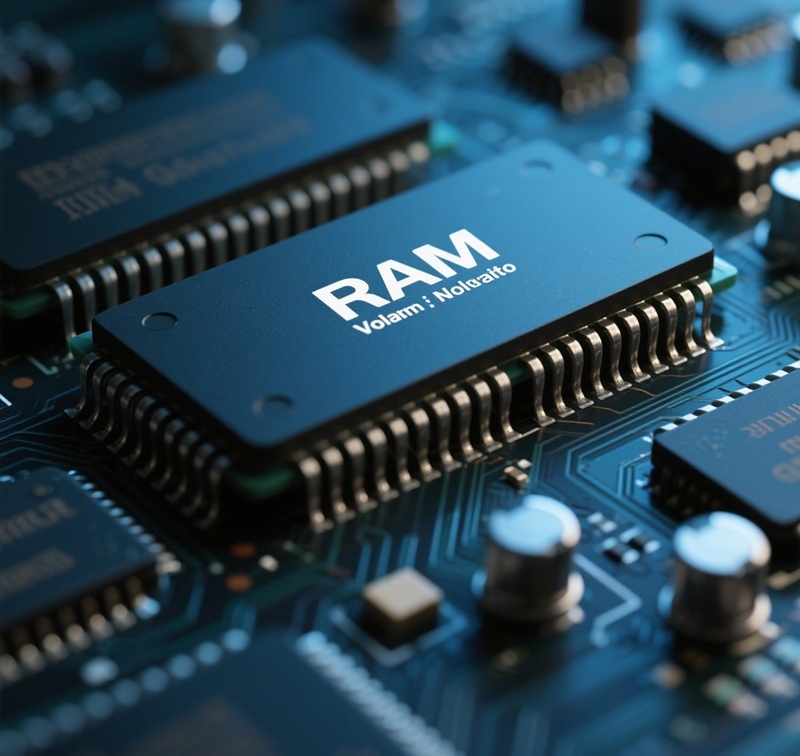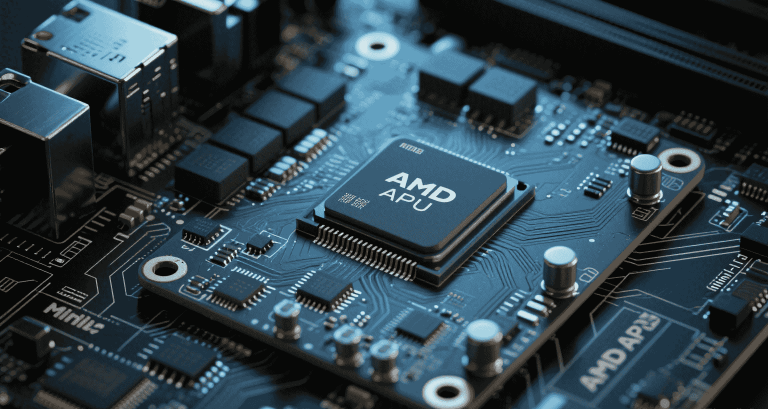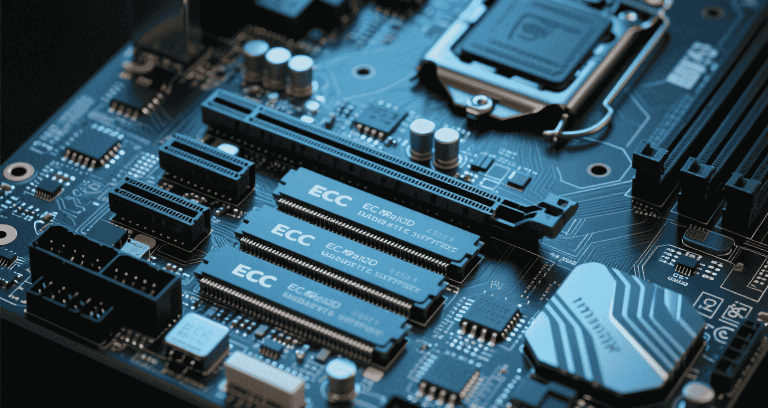Is RAM Volatile or Nonvolatile? Industrial Memory Guide
RAM is volatile memory that temporarily stores data while the computer is on. It loses data when power is turned off.

Table of Contents
- Introduction
- What Is RAM and Why It Matters in Industrial Applications
- Disadvantages of Nonvolatile Memory
- Advantages of Volatile Memory
- Key Differences Between Volatile and Nonvolatile Memory
- Why RAM Is Classified as Volatile Memory
- Are All RAM Types Volatile?
- Can Nonvolatile Memory Replace RAM?
- Why Volatile RAM Is Still Used in Industrial Systems
- How to Choose the Right Memory for Your Application
- Q&A
- Conclusion
Introduction
One of the most common questions we get at miniitxboard is: Is RAM volatile or nonvolatile? Understanding this distinction is critical when you’re designing embedded systems, automation solutions, or industrial-grade PCs. RAM (Random Access Memory) is classified as volatile memory, and in this article, we’ll explain why, what it means for system design, and how to choose the right memory for your application.
What Is RAM and Why It Matters in Industrial Applications
RAM is a temporary, high-speed memory component used to store data and instructions the CPU accesses during operation. Unlike permanent storage devices like SSDs or flash, RAM only retains data as long as power is supplied. In real-time industrial environments, such as robotics or manufacturing control, RAM is essential for:
- Live sensor data processing
- System control loops
- Buffering real-time data streams
Its volatility enables incredibly fast access speeds, making it an indispensable part of responsive, real-time systems.
Disadvantages of Nonvolatile Memory
Nonvolatile memory, such as SSDs or Flash, retains data without power. While that’s advantageous for permanent storage, it poses issues in real-time applications:
- Slower read/write speeds compared to RAM
- Higher latency not suitable for live control
- Limited write cycles (especially NAND Flash)
For instance, storing real-time telemetry data in nonvolatile memory could result in unacceptable delays in industrial or embedded systems.
Advantages of Volatile Memory
Despite losing data when power is cut, volatile memory (RAM) offers several advantages that make it the preferred choice for active computing:
- Speed: Extremely fast read/write cycles
- Dynamic usage: Perfect for temporary and changing data
- Multitasking: Enables running multiple processes simultaneously
Its speed makes volatile memory ideal for applications that need immediate responses, such as automated inspection systems or edge AI inferencing.
Key Differences Between Volatile and Nonvolatile Memory
| Feature | Volatile Memory (RAM) | Nonvolatile Memory (SSD/Flash) |
|---|---|---|
| Data Retention | Lost when power is off | Retained without power |
| Access Speed | Very Fast | Slower |
| Use Case | Temporary, active processing | Permanent data storage |
| Cost | Higher per GB | Lower per GB |
| Power Dependency | Requires continuous power | No power needed for retention |
Why RAM Is Classified as Volatile Memory
RAM stores data in electric charges within memory cells. When power is removed, these charges dissipate, and the data is lost. This is a defining feature of volatile memory. It’s designed this way to allow extremely fast data access and clearing, which is essential for temporary workloads such as executing code, managing buffers, or handling user inputs in real-time systems.
Are All RAM Types Volatile?
Yes, all conventional RAM types—including DDR3, DDR4, and DDR5—are volatile. They vary in speed, latency, and power efficiency, but all lose stored data when power is turned off. Even SRAM (used in CPU caches) is volatile.
Can Nonvolatile Memory Replace RAM?
In theory, new technologies like MRAM, ReRAM, and FRAM offer the promise of combining RAM speed with data retention. However, in practice:
- These technologies are expensive
- They typically offer lower capacity
- Write speeds still lag behind DRAM
As of now, no nonvolatile memory can fully replace RAM in high-speed or real-time environments.
Why Volatile RAM Is Still Used in Industrial Systems
Industrial systems require deterministic performance, and volatile RAM ensures:
- Fast real-time data access
- Reliable low-latency behavior
- Cost-effective speed per watt
At miniitxboard, we design embedded platforms that combine volatile RAM for processing with eMMC or SSD for persistent storage. This hybrid architecture balances speed with retention.
How to Choose the Right Memory for Your Application
Choosing the appropriate memory type is essential for ensuring that your system performs reliably, especially in industrial and embedded applications. You should start by evaluating the specific requirements of your project, such as speed, data retention, power consumption, and durability. Below is a detailed table that compares typical memory options to help you make an informed decision.
| Application Scenario | Recommended Memory Type | Why It Works Well |
|---|---|---|
| Real-Time Data Processing and Control | Volatile RAM (DDR4, DDR5) | Provides the highest speed and lowest latency for live data operations and responsive control loops. |
| Long-Term Data Storage and Logging | Nonvolatile Flash Memory or SSD | Retains data without power, ideal for logs, historical records, and system firmware storage. |
| Embedded System Boot and Configuration | eMMC or NOR Flash | Stores bootloaders and configuration data with reliable retention across power cycles. |
| AI Edge Inference and High-Speed Buffering | High-Bandwidth DDR5 RAM | Enables fast access to large models and input data for real-time analytics. |
| Harsh Industrial Environments | Industrial-Grade DRAM + SLC Flash | Offers temperature resilience, shock tolerance, and extended endurance for mission-critical operations. |
In most modern designs, combining volatile and nonvolatile memory is the best approach. RAM provides the speed necessary for active processing, while flash or SSDs ensure that important configuration files and logs are safely retained. This hybrid architecture allows you to optimize both performance and reliability in demanding applications.
Before making your final choice, consider these questions carefully:
Does your system need to process live data with minimal delay? Do you need to store logs that must survive a power outage? Are there environmental constraints such as extreme temperatures or vibrations? Answering these questions will help you define the right memory architecture for your project.
If you need assistance selecting the most suitable memory configuration, the team at miniitxboard is ready to provide expert guidance tailored to your specific requirements.
Q&A
Is RAM volatile?
Yes. RAM is classified as volatile memory because it requires a continuous power supply to maintain stored data. When the power is interrupted or turned off, all information in RAM is instantly lost, which differentiates it from nonvolatile storage like SSDs or flash memory devices.
Does RAM retain data without power?
No, RAM does not retain any data once power is removed. The stored electrical charges dissipate immediately, meaning all active information, open files, and program instructions are erased until the system is restarted and reloaded from permanent storage.
Can RAM be replaced by SSD or Flash?
Not in real-time applications due to speed limitations inherent in nonvolatile memory technologies. SSDs and flash storage devices are significantly slower in terms of latency and data throughput, making them unsuitable for the rapid, high-frequency access patterns that RAM is designed to handle efficiently.
Are all RAM types volatile?
Yes, all common RAM types—including DDR3, DDR4, DDR5, LPDDR, and SRAM—are inherently volatile. Although they differ in capacity, bandwidth, and power efficiency, they all share the fundamental property of losing data whenever the power is turned off or disrupted.
Why is RAM used in industrial PCs?
RAM is essential in industrial PCs because it offers extremely high speed and responsiveness for live data processing tasks. This capability ensures reliable real-time control, fast handling of sensor data streams, and smooth execution of automation and monitoring software in demanding industrial environments.
Conclusion
To answer the core question: RAM is volatile memory. This characteristic is what enables its exceptional speed, which is crucial in industrial and embedded systems. At miniitxboard, we help businesses architect systems that balance both volatile and nonvolatile memory for optimal performance, reliability, and efficiency.
If you need help selecting industrial-grade memory modules or embedded platforms with the right RAM architecture, contact our team.


